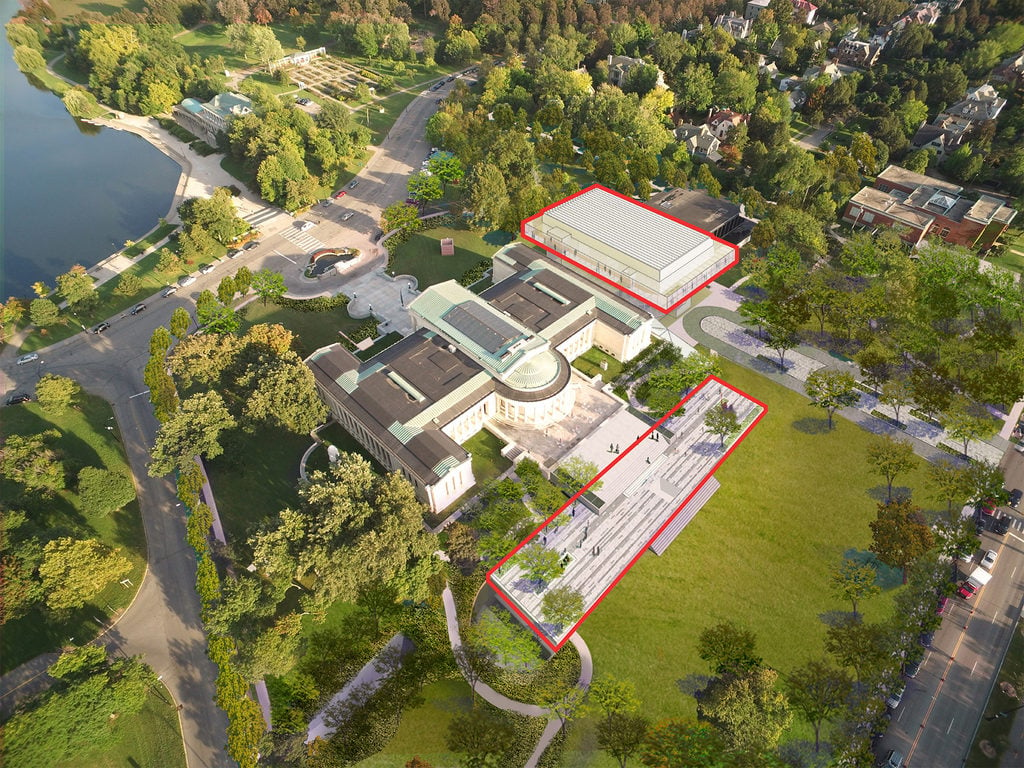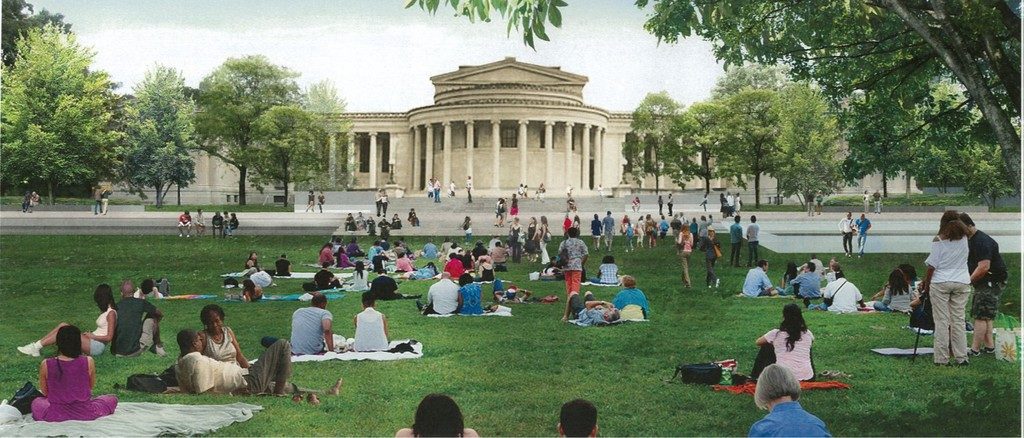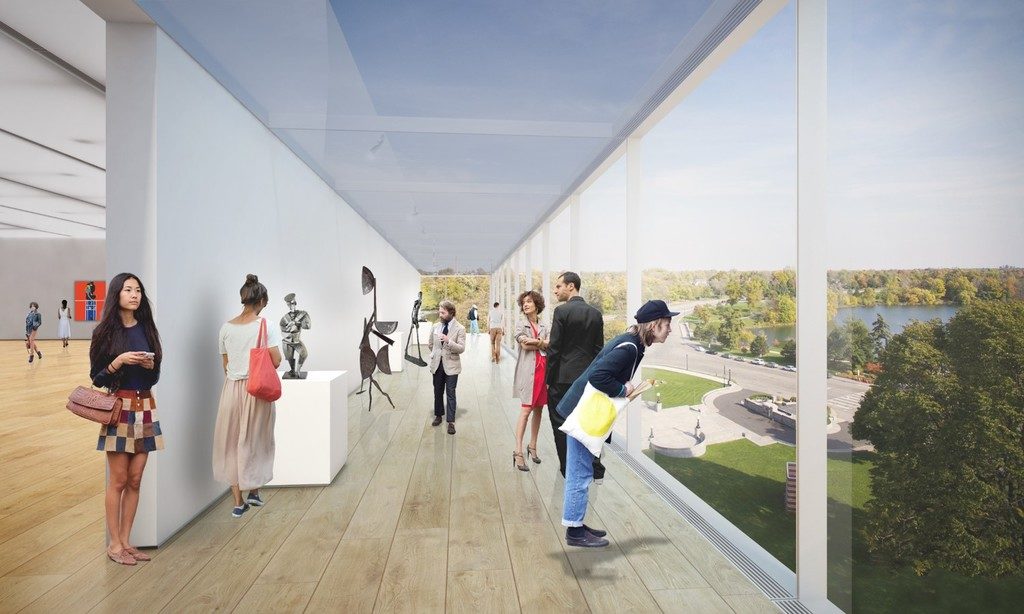Art World
The Albright-Knox Gallery Goes Underground With $155 Million Subterranean Expansion Scheme
The preliminary designs may also be the first to take into account the potential effects of self-driving cars on architecture.

The preliminary designs may also be the first to take into account the potential effects of self-driving cars on architecture.

Julia Halperin

The Albright-Knox Art Gallery in Buffalo houses one of the greatest art collections you may have never seen in person. But with a forthcoming expansion, the upstate New York institution hopes to change that.
Yesterday, the museum released new conceptual renderings for its planned building project, which will more than double its gallery space to 50,000 square feet. (Currently, the museum shows only 2.5 percent of its collection of Modern masterworks at one time; most large museums show between 4–5 percent.)
The Albright-Knox’s expansion also has another, less orthodox feature: It may be the first to consider the potential impact of self-driving cars on architecture.
Although the Albright-Knox has been trying to expand its footprint for 15 years, the design process—led by Shohei Shigematsu of OMA—only began in earnest last year. After soliciting feedback from locals, the architects were faced with a challenging dilemma: How can a museum that desperately needs more space expand without encroaching on the surrounding parkland?

The architects intend to build a parking lot underground and convert the existing lot into a public lawn. Photo courtesy of the Albright-Knox.
The solution: go underground. The Albright-Knox will convert its current parking lot into an underground gallery and a two-level below-grade parking garage.
In an unorthodox forward planning effort, the gallery’s director, Janne Sirén, also suggested that the garage “can eventually be reconfigured into about 20,000 square feet of additional gallery space in future decades should the demand for cars wane,” according to the Buffalo News.

A rendering of the Albright-Knox Art Gallery’s planned expansion, including a 13,000-square-foot gallery above the courtyard. Photo courtesy of the Albright-Knox.
In response to the public’s stated desire for free, flexible gathering space, the museum will also convert its existing courtyard into a glass-walled entry hall. Above the hall, a 13,000-square-foot gallery will overlook the surrounding park.

A rendering of the Albright-Knox’s planned expansion, which includes a massive entry hall. Photo courtesy of the Albright-Knox.
The price tag for the project has grown from $80 million to $155 million, $30 million of which will fund the endowment. (A total of $125 million has been raised to date, thanks in part to an unexpected $42.5 million gift from billionaire Buffalo native Jeffrey Gundlach.)
At a press conference in Buffalo yesterday, Shigematsu noted that the designs remain preliminary, and the exact shape and material of the buildings has yet to be finalized. “We are in an infant stage,” he said.
Construction is scheduled to begin in April 2019; the expanded Albright-Knox is expected to open by October 2021—by which time we may have a better sense of whether the museum’s vision of a driverless, exhibition space-filled future could become a reality.